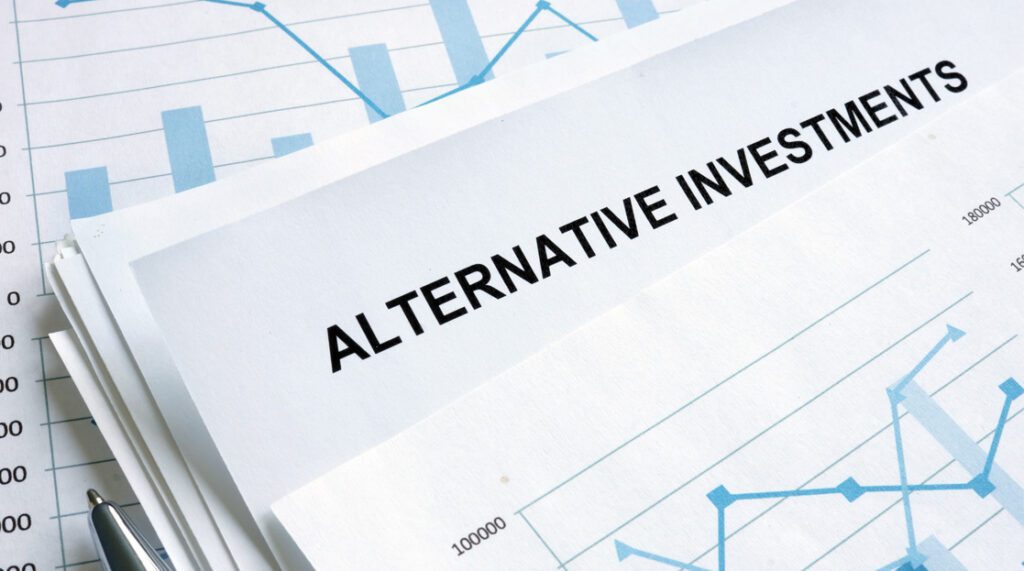
Capital moves fast, and smart firms move faster with alternative investment technology. In a market where timing, insight, and efficiency can make or break a deal, the right tools are everything. From AI-driven due diligence to automated investor matching, today’s leading firms are ditching outdated systems in favor of intelligent platforms built for speed and scale.
Let’s unpack the tools driving the future of capital allocation.
Table of Contents
Why Technology Became Mission-Critical in Alternatives
Private markets have historically lagged public markets in digital adoption, not due to disinterest, but because the structural complexity of alternatives resists off-the-shelf tools. But things have changed.
According to Preqin (2023), global AUM in alternatives surpassed $23 trillion, with continued momentum in PE, VC, infrastructure, and private credit. With that growth came:
- Explosion of deal types: direct, co-invest, secondaries, GP-led, roll-ups
- Rising LP expectations: faster responses, full audit trails, digital transparency
- Multi-entity fund structures: SPVs, feeders, master-feeders, offshore/onshore complexity
- Fragmented workflows: email threads, spreadsheets, PDFs, internal data silos
This environment makes manual processes a liability. Modern funds need a unified operating layer to integrate fundraising, diligence, deal execution, reporting, and IR.
What Is Alternative Investment Technology?
Rather than a single product, alternative investment technology refers to a coordinated stack of tools purpose-built for managing non-public, illiquid, multi-party capital structures. These tools enable:
- Faster fundraising and investor targeting
- Improved investment decision-making through AI and analytics
- Scalable operations across fund structures
- Transparent, on-demand LP engagement and reporting
It spans categories like:
- Fundraising and deal marketing (pitch tracking, LP segmentation)
- Deal evaluation and memo generation (AI-powered summaries, IC prep)
- Data room and diligence orchestration
- Portfolio/fund structure visibility
- LP servicing and audit-compliant reporting
Unlike generic CRMs or ERPs, these tools understand:
- The role of GP/LP economics
- Waterfall and carry mechanics
- Regulatory audit expectations
- The high-trust, long-cycle nature of capital relationships
What Traditional Tech Misses in This Context
Most general business tools or public-market software platforms fall short because they:
- Don’t support capital account complexity
- Can’t visualize cross-entity fund flows or SPV participation
- Lack integration with data rooms, audit trails, or compliance workflows
- Offer no real LP-specific insights
A portfolio dashboard isn’t helpful if:
- LPs can’t see how their exposure evolved
- The GP can’t tie investor engagement back to specific funds or stages
- Data is buried in static PDFs or non-interactive exports
The 20% of Tech Capabilities That Drive 80% of Strategic Value
While many platforms market a broad range of features, only a few capabilities truly shift outcomes in alternative investment execution. These are the tools that don’t just support workflows, they transform how capital is raised, diligence is completed, and investor trust is built.

1. AI-Generated Memos & Diligence Intelligence
Institutional-quality memos are often a bottleneck. AI-generated memos trained on uploaded documents help:
- Drastically reduce time from sourcing to IC submission
- Maintain strategy alignment and narrative clarity across deals
- Improve response times for LPs requiring contextual deal briefs
Even more transformative: document-based Q&A, where an AI model can return source-linked answers from PPMs, financials, or DDQs instantly.
2. Real-Time Engagement Analytics
In the alt world, silence from an LP can cost a fundraise. Smart engagement tools:
- Track pitch deck views down to individual slide dwell times
- Trigger follow-ups based on interaction patterns
- Identify drop-off points that can be optimized preemptively
This is not just marketing intelligence, it’s allocation prioritization, helping teams focus on LPs most likely to convert.
3. Fund Structure Mapping and Capital Flow Clarity
Most tools don’t understand the complexity of multi-entity vehicles. The best platforms do:
- Visualize capital flow across SPVs, co-invests, feeder funds
- Simulate waterfall outcomes with GP/LP economics
- Maintain linkage between legal docs, financial models, and fund-level IR
This enables CFOs, legal, and IR to operate from a unified fund design perspective.
4. Personalized LP Interfaces with Dynamic Reporting
Today’s investors expect more than static PDFs:
- Custom dashboards filtered by investor tier, fund tranche, or geography
- Embedded data rooms with version control and audit logs
- On-demand access to performance, commitments, and docs
When LPs can self-serve securely, fund teams spend less time managing inbound and more time advancing relationships.
5. Integrated Decision Frameworks
Platforms that unify workflows across deal, legal, IC, and IR do more than reduce friction, they enable faster, better-aligned decisions. That includes:
- Collaborative memo review across stakeholders
- Decision history tied to source docs and engagement data
- Streamlined approval paths that cut days off deal cycles
When these five capabilities are in place, alternative investment firms move faster, act smarter, and build more credibility with capital partners.
Segmenting Technology by Role
Different roles need different functionality. Here’s how leading firms apply tech based on team structure:
General Partners
- Fundraising automation (LP targeting, CRM, pitch tracking)
- AI-generated memos and pipeline analytics
- Centralized data rooms with smart investor sharing
Fund Operations / CFOs / Legal
- Workflow routing for approvals, KYC, compliance logs
- Capital call preparation with cross-fund validation
- Integration with fund admins or custodians
Investor Relations Teams
- Tiered LP views with custom messaging
- Engagement tracking and follow-up intelligence
- Real-time sharing of fund documents and updates
Capital Allocators
- Searchable manager platforms by strategy, region, or structure
- Memo review with Q&A assistants
- Fund performance overlays across vehicles
Emerging Trends in Alternative Investment Tech
Generative AI in Diligence
Not just summarizing documents, AI now supports:
- Extracting insights across multiple uploads
- Comparing language across PPM versions
- Flagging inconsistencies in due diligence questionnaire answers
Tokenized Fund Access
Still experimental, but some platforms offer token-based LP interests for:
- Improved secondary liquidity
- Lower administrative overhead
- Fractional participation in diversified pools
Vertical SaaS for Niche Alternatives
Tools purpose-built for:
- Litigation finance
IP royalties - Clean energy infra
These platforms go deeper than generalist software.
Integrated Data Layers
Advanced firms now build unified data warehouses for:
- Fund admin feeds
- CRM events
- Portfolio KPIs
- LP capital flows
This enables live dashboards, waterfall simulations, and predictive reporting.
Case Study: Scaling Execution with Capq.ai
Firm: $400M multi-strategy alt investment manager
Challenges:
- Memos were taking 10+ hours per deal
- No visibility into which LPs engaged post-deck send
- Quarterly reporting required cross-platform, manual effort
Capq.ai Solution:
- Used AI memo builder to create 3 tailored versions of the same deal memo (IC, LP, legal)
- Shared decks via secure viewer with slide-level engagement tracking
- Automated LP reports with dynamic fund + co-invest drilldowns
Results:
- IC prep time reduced by 60%
- LP follow-up conversion improved by 32%
- Quarterly reporting went from 5 days to 2 hours
“Capq turned our deal flow into a system, not a set of documents.” – Managing Partner
Contact CQ now for a tailored solution
Final Thought
The best alternative investment firms no longer see technology as overhead. They see it as a core infrastructure that supports:
- Faster, smarter capital decisions
- Better LP experiences
- Scalable firm operations
Firms competing only on relationships or sourcing will be outpaced by those who operationalize better decisions through data, process, and speed.
Ready to rethink how your fund raises, executes, and scales? Visit Capq.ai to see how AI-driven alternative investment tech helps teams manage



